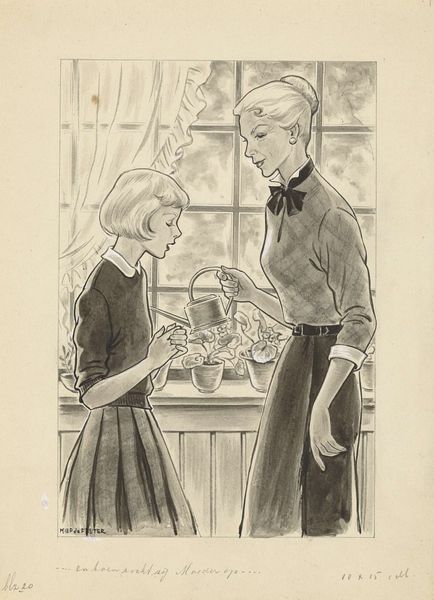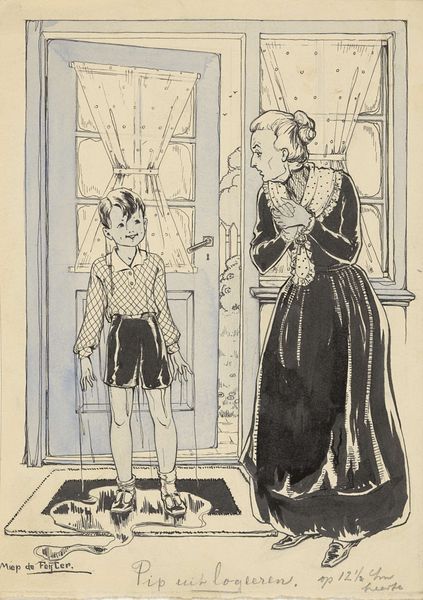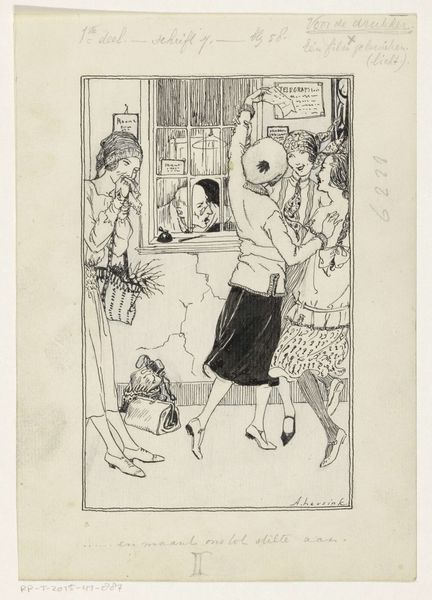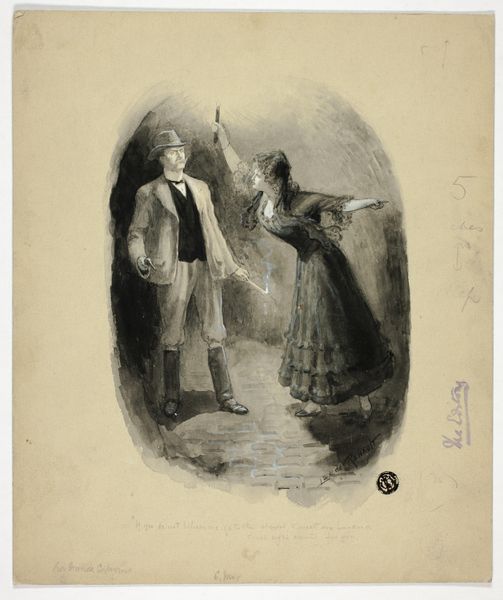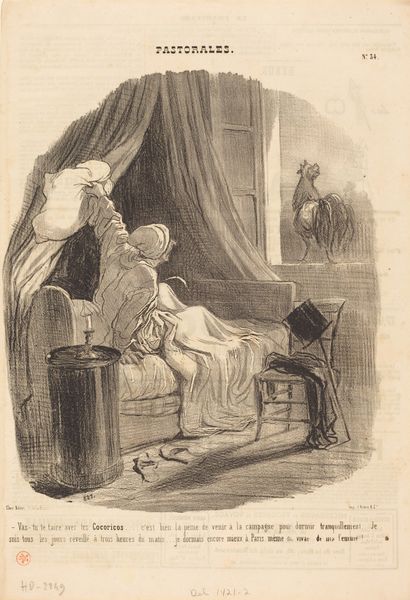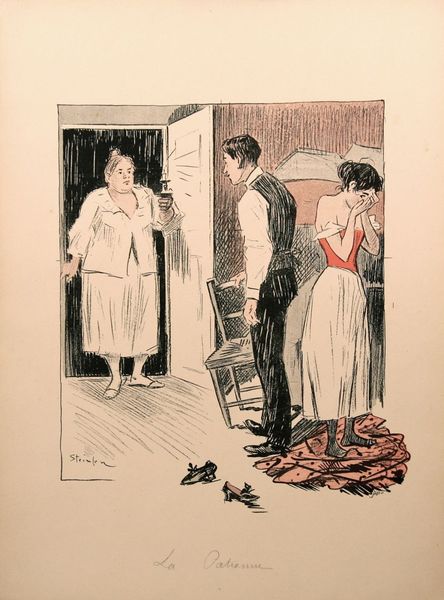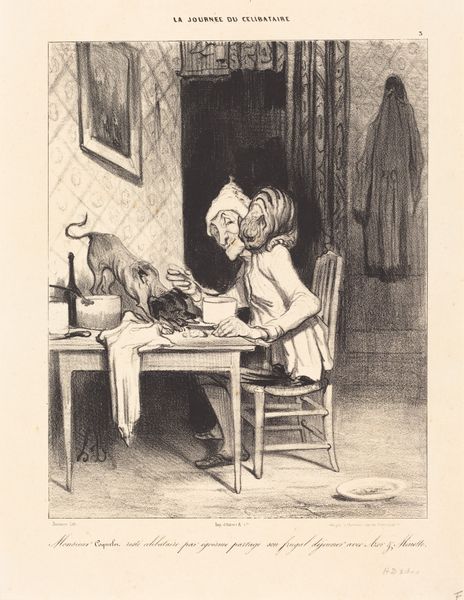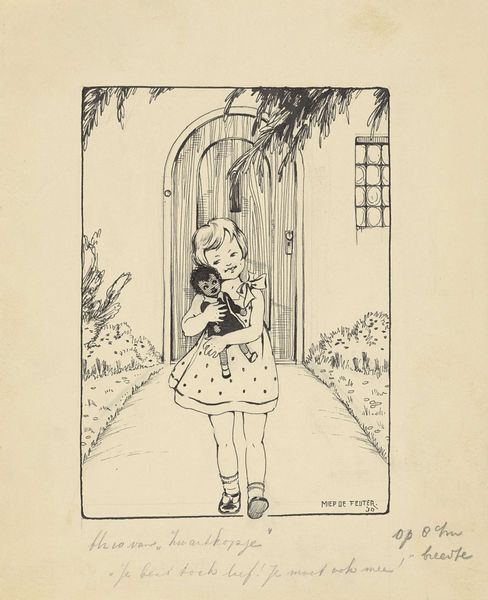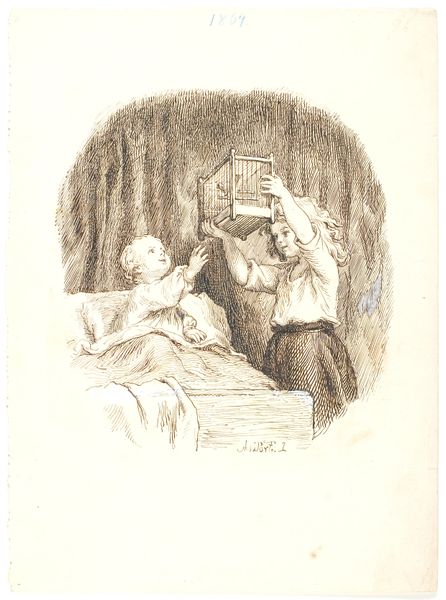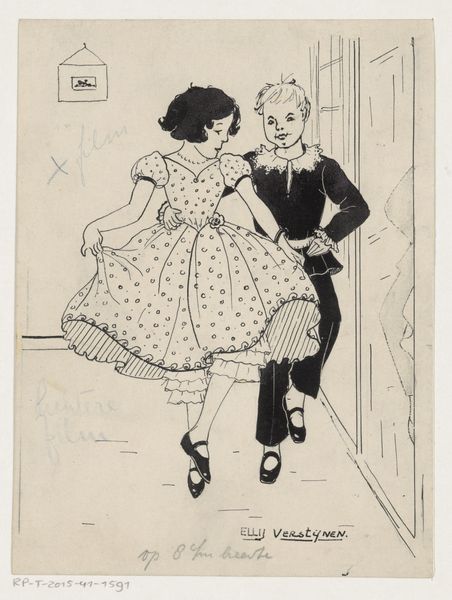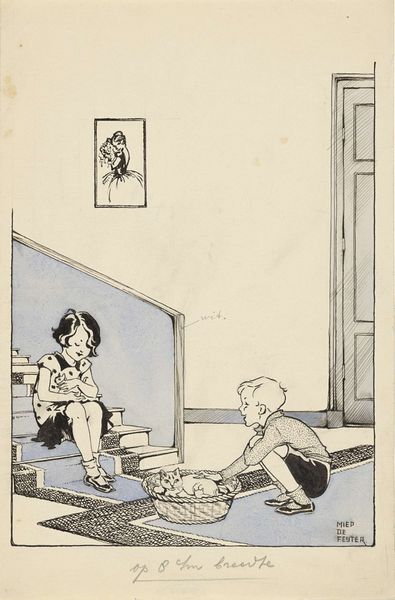
drawing, paper, pencil
#
portrait
#
drawing
#
narrative-art
#
figuration
#
paper
#
pencil
#
genre-painting
Dimensions: height 237 mm, width 173 mm
Copyright: Rijks Museum: Open Domain
Curator: I'm drawn to the immediate sense of intimacy and anticipation in this work. The delicate shading and precise lines evoke a feeling of quiet joy. Editor: It does feel charmingly old-fashioned. Like something out of a mid-century storybook illustration—though I find that kind of idealized domesticity a bit complicated. Let’s dive into what’s going on here. We’re looking at “Twee meisjes kijken naar de sneeuw,” which translates to "Two Girls Looking at the Snow," a drawing by Miep de Feijter from before 1953. Executed in pencil on paper, it's a vignette into what seems like a cozy domestic scene. Curator: Definitely, and the scene speaks volumes, doesn't it? The window, almost like a stage, frames the snowy world outside, a powerful visual metaphor for the world beyond domesticity—a contrast of their sheltered indoor life against nature. Consider the iconographic power of winter and snow, symbolizing change and perhaps purity. Editor: Right, there's definitely a performative aspect here, and what's so striking to me is how De Feijter stages this seemingly innocent scene with gender and class implications. Look at the visual difference between the two girls, with one actively experiencing, performing even, while the other is just a passive observer. What expectations of them might exist? Curator: The active figure is the one in the nightgown pressing her hand to the window pane, it speaks of that childhood sense of wonder. It has this pre-war, somewhat old world illustration feeling of naivety about it. Even their garments point to the importance of ritual—a threshold moment made special. Editor: Exactly. I think it invites us to consider how societal norms, especially concerning girlhood, shape our understanding of freedom, possibility, and belonging. A certain privilege to not even think about your station as a girl and just enjoy snow at the window, it makes you think who doesn't get to enjoy the simple freedom? The drawing really becomes a mirror reflecting on our collective past. Curator: Indeed, the snow then could serve as a representation of the outside world and even larger possibilities in their lives. Thank you for the added layers and for framing this artwork in such an accessible, meaningful way. It’s rewarding to peel back the layers and find new ways to look at De Feijter’s drawing and discover those nuances. Editor: Thanks. It shows how even a simple genre scene can provoke dialogue about much broader social currents and the nuances embedded in visual representation.
Comments
No comments
Be the first to comment and join the conversation on the ultimate creative platform.
